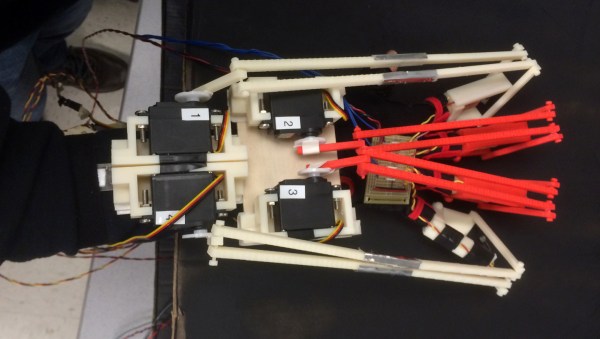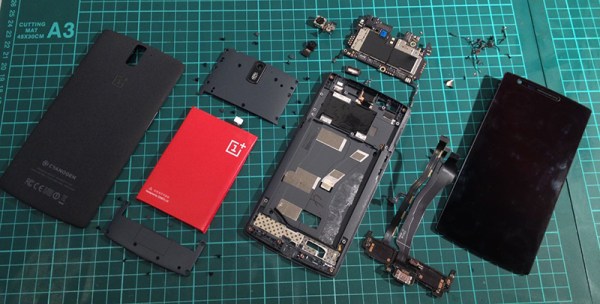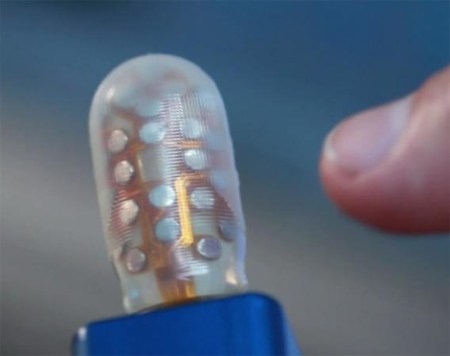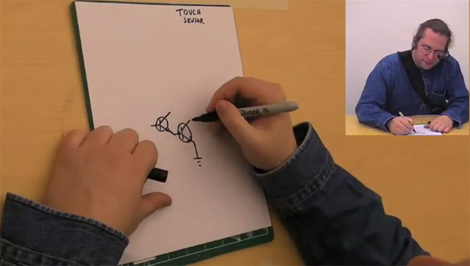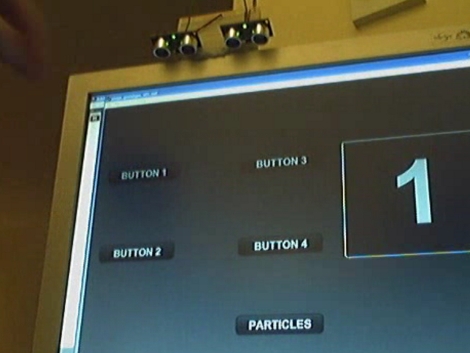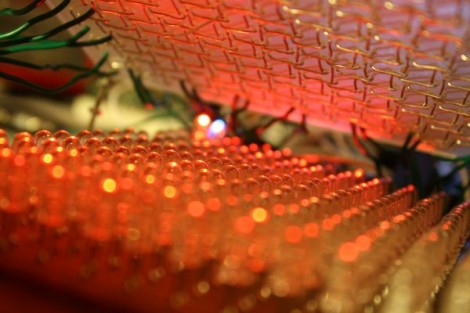Many of us have gone on a stationary romp through some virtual or augmented scape with one of the few headsets out in the wild today. While the experience of viewing a convincing figment of reality is an exciting sensation in itself, [Mark Lee] and [Kevin Wang] are figuring out how to tie other senses into the mix.
The duo from Cornell University have built a mechanical exoskeleton that responds to light with haptic feedback. This means the wearer can touch the sphere of light around a source as if it were a solid object. Photo resistors are mounted like antenna to the tip of each finger, which they filed down around the edges to receive a more diffused amount of light. When the wearer of the apparatus moves their hand towards a light source, the sensors trigger servo motors mounted on the back of the hand to actuate and retract a series of 3D printed tendons which arch upward and connect to the individual fingers of the wearer. This way as the resistors receive varying amounts of light, they can react independently to simulate physical contours.
One of the goals of the project was to produce a working proof of concept with no more than 100 dollars worth of materials, which [Mark] and [Kevin] achieve with some cash to spare. Their list of parts can be found on their blog along with some more details on the project.

